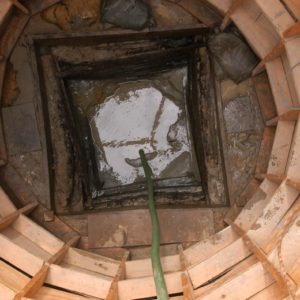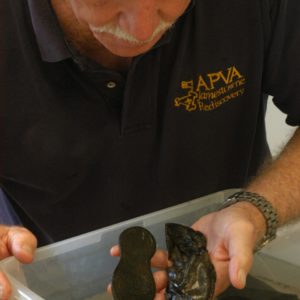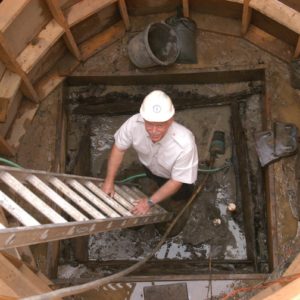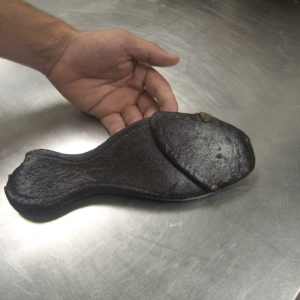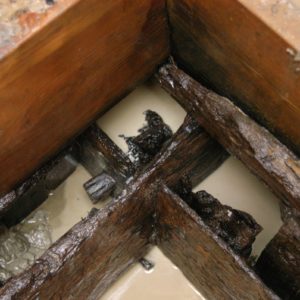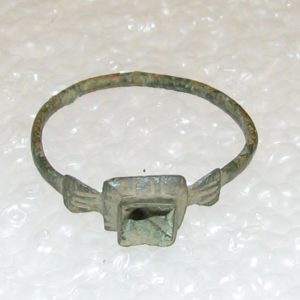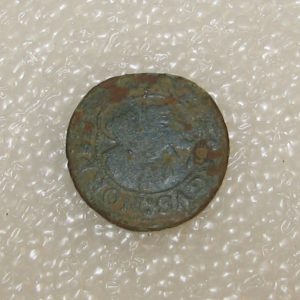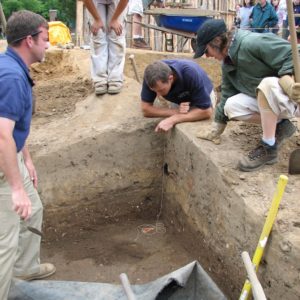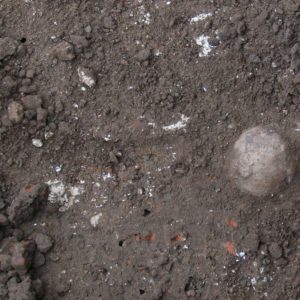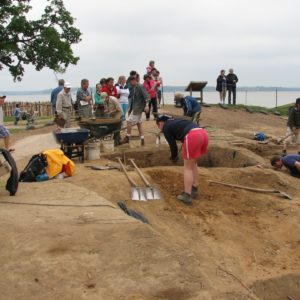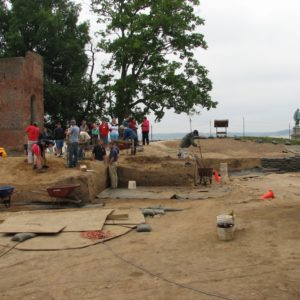This year’s field school is in session and the students are helping the Jamestown Rediscovery archaeologists dig near the northern bulwark of James Fort. Excavation of the early 17th-century well has been put on hold so that the added manpower of the field school students can be used to define the northern area of the fort. With the archaeologists serving as team leaders, the students have formed several groups, each digging in a different location in the area.
When the discovery of the well was made late last year, the archaeologists had been following the footprint of a very large building inside the fort that was built parallel to the western palisade wall. Several “H”-shaped hearths were discovered in the interior of the buildings which indicated a fireplace shared between two adjoining rooms. The hearth closest to the north bulwark is at a 90-degree angle with respect to the other hearths, indicating that this part of the building had a different orientation than the rest of it. One goal of the dig is to define this section of the building. A large posthole has been found nearby which may be evidence of an addition to the building or evidence for part of a ramp for the northern bulwark. So far the archaeologists have found several features such as the posthole, but no sign of the section’s foundation.
One group of archaeologists digging a bit closer to the eastern palisade wall has discovered a substantial brick feature. It isn’t clear at this point what it is because only a small section of it has been exposed. Within feet of the brick feature archaeologists uncovered a cannonball.
Before the excavations of the well were temporarily put on hold, a number of interesting discoveries were made. Amazingly the wooden lining of the well shaft was found, still largely intact. The wet environment of the well allowed for this remarkable preservation. Also amazingly well preserved thanks to the unique environment of the well is a recently excavated leather shoe. Two other recently discovered artifacts include a jetton minted by Hans Schultes of Nuremberg and a copper alloy ring. The jetton (counting coin) is the first one found at Jamestown that was made by Hans Schultes and it dates from between 1586 and 1603. The ring has a square bezel and is missing its stone, which would probably have been semi-precious.
As this summer’s dig progresses there are plans to move closer to the river and define the boundaries of a burial ground found last year just inside the western palisade wall. Other possibilities include the excavation of a Confederate powder magazine very close to where the remains of Captain Bartholomew Gosnold were found.
related images
- The water and the square well frame emerge
- Leather shoe and sole found in the well
- Director of Archaeology William Kelso inside the well. Darker wood inside frame built by archaeologists is the original wooden well frame.
- Leather shoe sole found in well
- Closeup of original well frame corner with peg
- Copper alloy ring
- Hans Schultes Jetton
- Brick feature and cannonball (circled)
- Archaeologists examine an earth layer inside James Fort’s walls
- A closeup of the cannonball
- Another view of the dig
- Visitors to Historic Jamestowne observe the excavations



